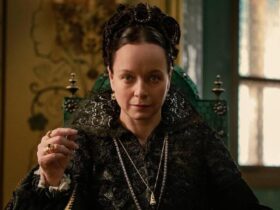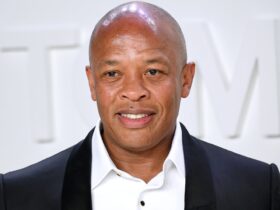In the world of cinematic superheroes and villains, few introductions have been as meteoric and enigmatic as Jonathan Majors’ debut as Kang the Conqueror. Known for his versatility and immersive performances, Majors has carved a unique path in Hollywood. His portrayal of Kang is not just another notch in his acting belt; it’s a testament to his depth and range as an actor. Understanding Majors’ journey to becoming Kang requires a look at his past roles, his approach to this character, and the cultural significance of this casting choice.
Early Career: The Making of a Virtuoso
Jonathan Majors nurtured his acting craft with a level of rigor often reserved for veteran actors. With an MFA from the prestigious Yale School of Drama, Majors embarked on a journey through roles that showcased his chameleonic ability to delve into his characters. From his critically acclaimed performance in “The Last Black Man in San Francisco” to his visceral portrayal in “Lovecraft Country,” Majors demonstrated a profound ability to bring complex characters to life. These performances did more than just entertain; they highlighted societal issues, making Majors a standout figure in the competitive realm of acting. Each role built upon his skill set, preparing him for the multifaceted nature of Kang the Conqueror.
Kang the Conqueror: A Character Study
The character Kang the Conqueror is a tapestry of complexities, a far-reaching villain in the Marvel Cinematic Universe (MCU) known for his time-traveling capabilities and intellect. Originating from the comics, Kang has numerous alter-egos, making him one of the most complex characters in the Marvel roster. For Majors, the challenge wasn’t just in portraying a new villain but encapsulating the various iterations of Kang’s persona.
In “Loki,” we were introduced not to Kang the Conqueror himself, but to one of his variants, “He Who Remains,” a tempered, almost casual version of the character. Majors infused “He Who Remains” with a playful eccentricity, a far cry from the menacing overlord fans might have expected. This portrayal hints at the range of personas Majors must adopt to portray the character’s full spectrum in future MCU installments. His interpretation of Kang is expected to evolve, promising a richness to the character often absent in comic book villains.
Embracing Complexity: Method in Madness
What sets Majors apart in his role as Kang is his commitment to understanding and internalizing his character’s psyche. Like his previous roles, Majors didn’t just play Kang; he became him. This method acting approach requires immense psychological and emotional dedication.
For Kang, Majors faced a unique challenge: the character’s comic book origin is convoluted, with multiple versions existing across various timelines. Preparing for this role meant understanding these intricacies and translating them into a coherent, believable character on screen. Majors’ deep dive into Kang’s labyrinthine history showcases his dedication to authenticity and his ability to navigate complex narratives, a skill he’s sharpened throughout his career.
Cultural Impact: Shifting the Narrative
Jonathan Majors’ casting as Kang has broader implications beyond the MCU. It signifies a shift in cultural narratives and representation in blockbuster cinema. Traditionally, major comic book roles, especially complex main characters, have been portrayed by white actors. Casting Majors, an African American, as a central character is a step towards more inclusive storytelling, breaking away from stereotypical roles historically assigned to actors of color.
Moreover, Majors’ Kang isn’t just a one-dimensional antagonist; he is nuanced and multifaceted. This casting choice is a statement that actors of color have an equal place in complex, significant roles, challenging and expanding the narrative scope within which they can operate. It also underscores the MCU’s commitment to diversity, an aspect becoming increasingly crucial to audiences worldwide.
The Road Ahead: Anticipation and Speculations
With his introduction in “Loki,” Majors has set high expectations for his return in “Ant-Man and the Wasp: Quantumania” and potential subsequent appearances in the MCU. Fans anticipate how Majors’ portrayal will develop, especially as Kang is expected to be a recurring character with significant influence on the overarching narrative.
Furthermore, given Kang’s nature as a time-traveling entity with multiple variants, there are endless possibilities for how Majors can explore and express the character’s depth. Speculations are rife, but one thing is certain: Majors’ role will be a keystone in the MCU’s next phases. His performance will not only define Kang but also shape the narrative trajectory of the entire cinematic universe.
Unveiling the Layers: The Multidimensional Villain
Jonathan Majors isn’t just presenting Kang as a mere antagonist. He’s exploring layers, unveiling a character with emotions, motives, and vulnerabilities. This depth defies the conventional one-note depiction of villains, inviting the audience to engage with Kang on multiple levels, empathizing with or contesting his actions based on a deeply structured character foundation.
Bridging Realities: The Significance of Time-Travel
Kang’s time-traveling nature, brought to life by Majors, introduces audiences to multifarious realities and timelines, an ambitious narrative concept in the MCU. This aspect isn’t just a plot device; it’s a narrative labyrinth, guiding viewers through stories that challenge linear storytelling and offer a kaleidoscope of perspectives, enhancing the cinematic experience.
The Actor’s Craft: Immersion and Adaptation
Majors approaches his roles with profound immersion, adapting his craft to suit the narrative’s needs. As Kang, he’s not just adopting a character but an ethos, enveloping himself in the time-traveler’s psyche. This immersion distinguishes his performance, transforming him into a vessel for the character’s essence, transcending traditional acting paradigms.
A Future in Flux: The Audience’s Role
As Kang impacts the MCU’s storyline, audiences play a crucial role. Their reception and interpretation of Majors’ portrayal will influence the character’s evolution. This interactive dynamic between viewer and character enriches the viewing experience, turning passive spectators into active participants in Kang’s narrative journey.
The Echo of Influence: Majors’ Impact on Co-Stars
Jonathan Majors’ dedication impacts his co-stars, compelling them to match his intensity and commitment. His scene presence elevates performances around him, creating a ripple effect of heightened engagement and interaction. This symbiosis not only enhances individual performances but also elevates the overall narrative quality.
Beyond the Screen: Social Implications of Kang’s Portrayal
Majors’ portrayal of Kang extends beyond entertainment; it’s a cultural dialogue. It challenges racial stereotypes and pushes for broader representation and diversity in mainstream media. This portrayal is a beacon for change, signaling a future where inclusivity isn’t an exception but a norm, profoundly impacting societal perceptions.
Conclusion: Redefining Villainy in Modern Cinema
Jonathan Majors’ journey as Kang the Conqueror is more than a typical villain’s tale. It’s the story of an actor’s rise to prominence through skill, dedication, and a deep understanding of his craft. In taking on Kang, Majors doesn’t just portray a character; he explores the human condition, even when embodied by a time-traveling despot. His portrayal promises a villain that is not just to be feared, but understood and, in many ways, related to.
Majors’ role as Kang breaks barriers, challenges stereotypes, and stands as a testament to the evolving landscape of modern cinema. As audiences, we are set to witness not just a masterful performance, but a cultural shift embodied through an actor who has proven that every character he portrays is a journey beyond the script, beyond the screen, and beyond the conqueror.

































